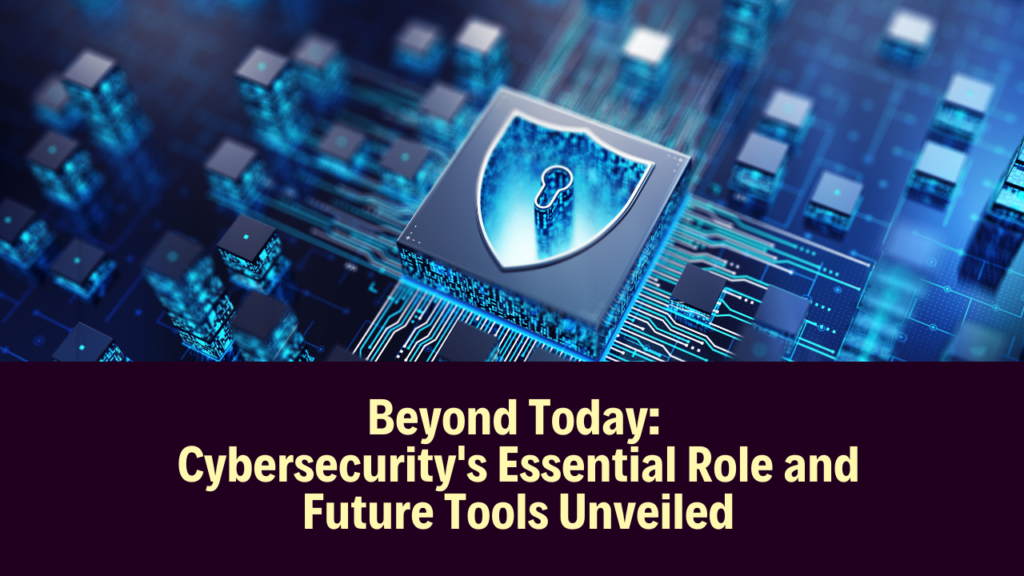Securing Tomorrow: Understanding the Imperative Role of Cybersecurity and Essential Tools for the Future

In an increasingly interconnected world, where data serves as the backbone of businesses and personal lives, the importance of cybersecurity cannot be overstated. The digital landscape continues to evolve, presenting both opportunities and unprecedented risks. Understanding the significance of cybersecurity and being equipped with the right tools is crucial for safeguarding against emerging threats. Let’s explore the essence of cybersecurity, its future, and the top seven essential tools in this domain.
Importance of Cybersecurity
Cybersecurity serves as the guardian of digital assets, shielding sensitive information from cyber threats such as hacking, data breaches, ransomware attacks, and more. It ensures confidentiality, integrity, and availability of data, preserving trust among users and clients. Beyond protecting data, it also safeguards critical infrastructure, financial systems, and national security, making it indispensable in today’s digital era.
Future of Cybersecurity
As technology advances, so do the strategies of cybercriminals. The future of cybersecurity involves tackling sophisticated threats through innovations like artificial intelligence, machine learning, and quantum computing. Cybersecurity professionals will need to stay ahead by anticipating and countering these evolving threats, embracing proactive defense measures, and fostering a culture of cybersecurity across organizations.
The Top 7 Must-Have Cybersecurity Tools
In today’s digital age, safeguarding sensitive information and protecting systems from cyber threats is paramount for businesses of all sizes. Cybersecurity tools play a crucial role in fortifying defenses and mitigating potential risks. Here are the top seven must-have cybersecurity tools that can bolster your organization’s security posture:
- Firewalls: Acting as a barrier between your internal network and external threats, firewalls monitor and control incoming and outgoing network traffic. Next-generation firewalls provide advanced features like intrusion detection and prevention systems (IDPS) and application control, offering comprehensive protection against various cyber threats.
- Antivirus Software: An essential tool for detecting, preventing, and removing malicious software, antivirus software scans and monitors systems for viruses, malware, ransomware, and other cyber threats. With regular updates and real-time scanning, it helps prevent potential security breaches.
- Virtual Private Network (VPN): VPNs create a secure and encrypted connection over public networks, ensuring secure data transmission between remote users and corporate networks. They safeguard sensitive information from interception by encrypting data and providing anonymity online.
- Multi-factor Authentication (MFA): MFA adds an extra layer of security by requiring users to provide multiple forms of verification to access systems or applications. It typically involves a combination of passwords, biometrics, or one-time codes, significantly reducing the risk of unauthorized access.
- Security Information and Event Management (SIEM) Tools: SIEM tools collect and analyze data from various sources within an organization’s IT infrastructure to identify and respond to security threats in real-time. They provide insights into security incidents, enabling proactive threat detection and response.
- Data Encryption Tools: Encryption tools encode sensitive data, making it unreadable without the corresponding decryption key. End-to-end encryption protects data both in transit and at rest, ensuring confidentiality and integrity, especially when shared or stored across networks.
- Penetration Testing Tools: Penetration testing tools simulate cyber attacks to identify vulnerabilities in systems, networks, or applications. By conducting controlled tests, organizations can proactively identify weaknesses and address them before real threats exploit them.
Conclusion
Investing in and implementing these cybersecurity tools not only strengthens your organization’s security posture but also demonstrates a proactive approach towards protecting sensitive data and systems. Regular updates, maintenance, and employee training on these tools are equally important to ensure comprehensive cybersecurity defense.
Remember, cybersecurity is an ongoing process that requires continual assessment and adaptation to address evolving threats in the digital landscape. By integrating these essential cybersecurity tools into your defense strategy, you significantly enhance your resilience against potential cyber threats.

Leave a Reply